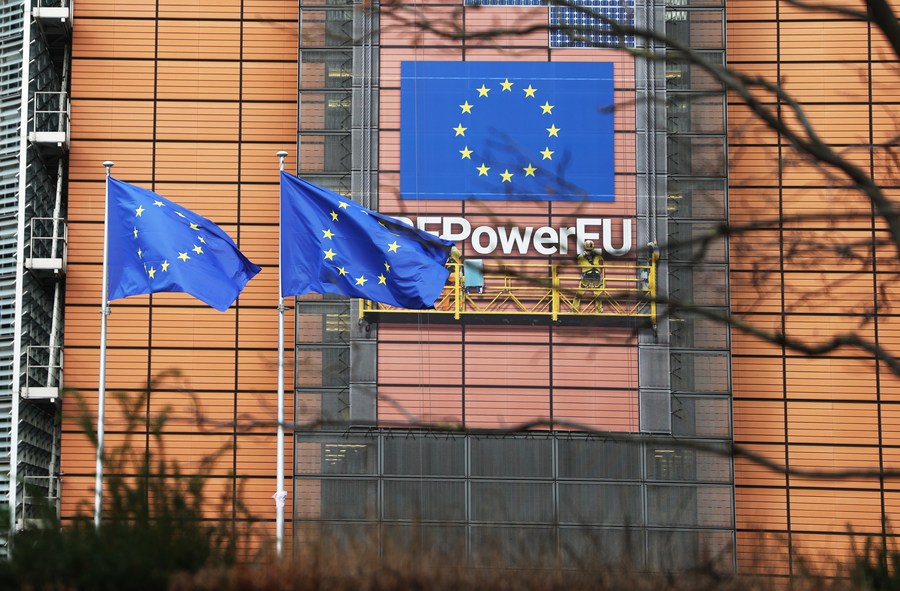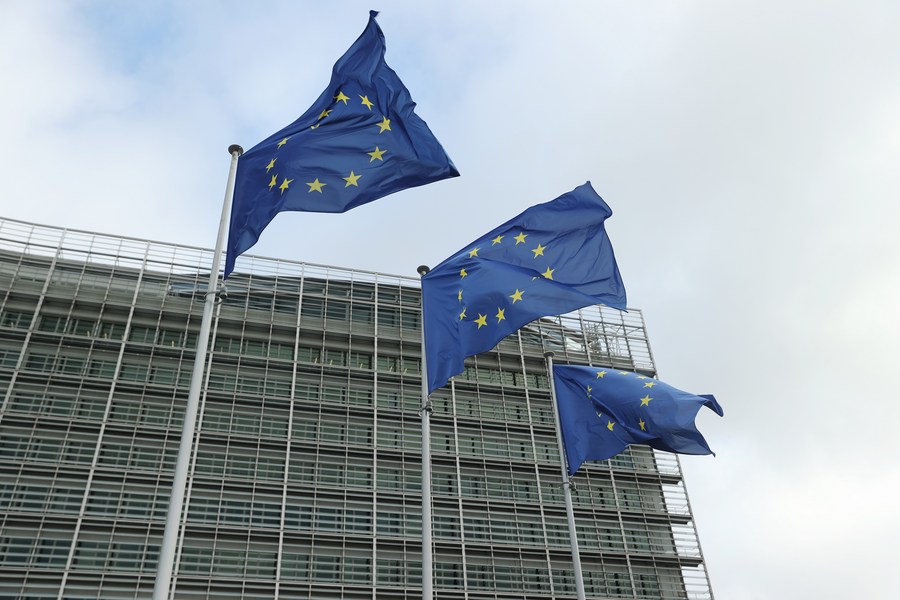

This photo taken on Nov. 15, 2023 shows part of the European Commission building in Brussels, Belgium. (Xinhua/Zhao Dingzhe)
For 2024, the EU’s economic growth is projected to reach 0.9 percent, down from the autumn projection of 1.3 percent. The eurozone’s growth is revised down to 0.8 percent from the 1.2 percent predicted in autumn.
BRUSSELS, Feb. 15 (Xinhua) — The European Commission’s Winter Interim Forecast published on Thursday revised growth in both the European Union (EU) and the euro area down to 0.5 percent in 2023, from 0.6 percent projected in the Autumn Forecast in November.
For 2024, the EU’s economic growth is projected to reach 0.9 percent, down from the autumn projection of 1.3 percent. The eurozone’s growth is revised down to 0.8 percent from the 1.2 percent predicted in autumn.
“After a bruising 2023, the European economy has emerged a little weaker than expected, although the rebound should speed up gradually this year and into 2025,” said Valdis Dombrovskis, executive vice president of the European Commission for an Economy that Works for People.
“The European economy has left behind it an extremely challenging year, in which a confluence of factors severely tested our resilience,” said European Commissioner for Economy Paolo Gentiloni.
These factors include the erosion of household purchasing power, strong monetary tightening, the partial withdrawal of fiscal support, and falling external demand. The EU nearly avoided recession at the end of 2023 and is starting 2024 weaker than expected.
Economic growth should pick up in 2024, supported by inflation falling, real wage growth, and a resilient labor market. The second half of the year should see stabilization in the pace of growth, until the end of 2025, according to the forecast.
“The rebound expected in 2024 is set to be more modest than projected three months ago, but to gradually pick up pace on the back of slower price rises, growing real wages and a remarkably strong labor market. Investment is expected to hold up, buoyed by easing credit conditions and the flow of Recovery and Resilience Facility funding,” said Gentiloni.

This photo taken on Nov. 15, 2023 shows part of the European Commission building in Brussels, Belgium. (Xinhua/Zhao Dingzhe)
In 2025, economic activity is still expected to expand by 1.7 percent in the EU and 1.5 percent in the euro area, according to the Winter Economic Forecast.
“In 2025, growth is set to firm and inflation to decline to close to the European Central Bank’s two percent target,” said Gentiloni.
In the EU, inflation is forecast to fall from 6.3 percent in 2023 to 3 percent in 2024, and 2.5 percent in 2025, according to the forecast. In the euro area, the figure is expected to decelerate from 5.4 percent in 2023 to 2.7 percent in 2024 and 2.2 percent in 2025.
The decrease in inflation in 2023 was faster than expected and largely driven by the decline in energy prices.
“The global landscape remains highly uncertain. We are closely tracking geopolitical tensions, which could have a negative impact on growth and inflation,” said Dombrovskis.
These geopolitical tensions, especially in the Middle East and in the Red Sea, could marginally impact inflation.
The forecast also faces risks related to consumption performance, wage growth, and profit margins; the duration and magnitude of prevailing high-interest rates; and the impacts of climate change, particularly extreme weather events. ■






